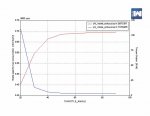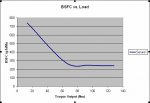krugford
New Member
- Joined
- Aug 6, 2007
- Messages
- 733
- Reaction score
- 2
- Points
- 0
- Age
- 41
- Location
- Iowa
- Vehicle Year
- 2003
- Make / Model
- Ford
- Transmission
- Automatic
Actually, in the engineering world, it's referred to as BSFC. Specifying it merely as SFC is vague. Most of the time, you are talking about BSFC, but what about FSFC, PSFC, ISFC, etc. (friction, pumping, indicated) If you are dealing with combustion related material, then those become very important numbers to pay attention to. If you're simply running an engine in the lab to determine general operating characteristics, then BSFC is the number you'll pay the most attention to when dealing with fuel consumption.
0.6 is rather poor for a modern EFI engine running at WOT. As stated earlier, BSFC is dependent on load. At light load levels, BSFC gets much worse than 0.6. What do you think your BSFC is running down the road? The commonly advertised number for BSFC is determine from peak torque, however, it is not a constant across an engine's operating range.
0.6 is rather poor for a modern EFI engine running at WOT. As stated earlier, BSFC is dependent on load. At light load levels, BSFC gets much worse than 0.6. What do you think your BSFC is running down the road? The commonly advertised number for BSFC is determine from peak torque, however, it is not a constant across an engine's operating range.
















